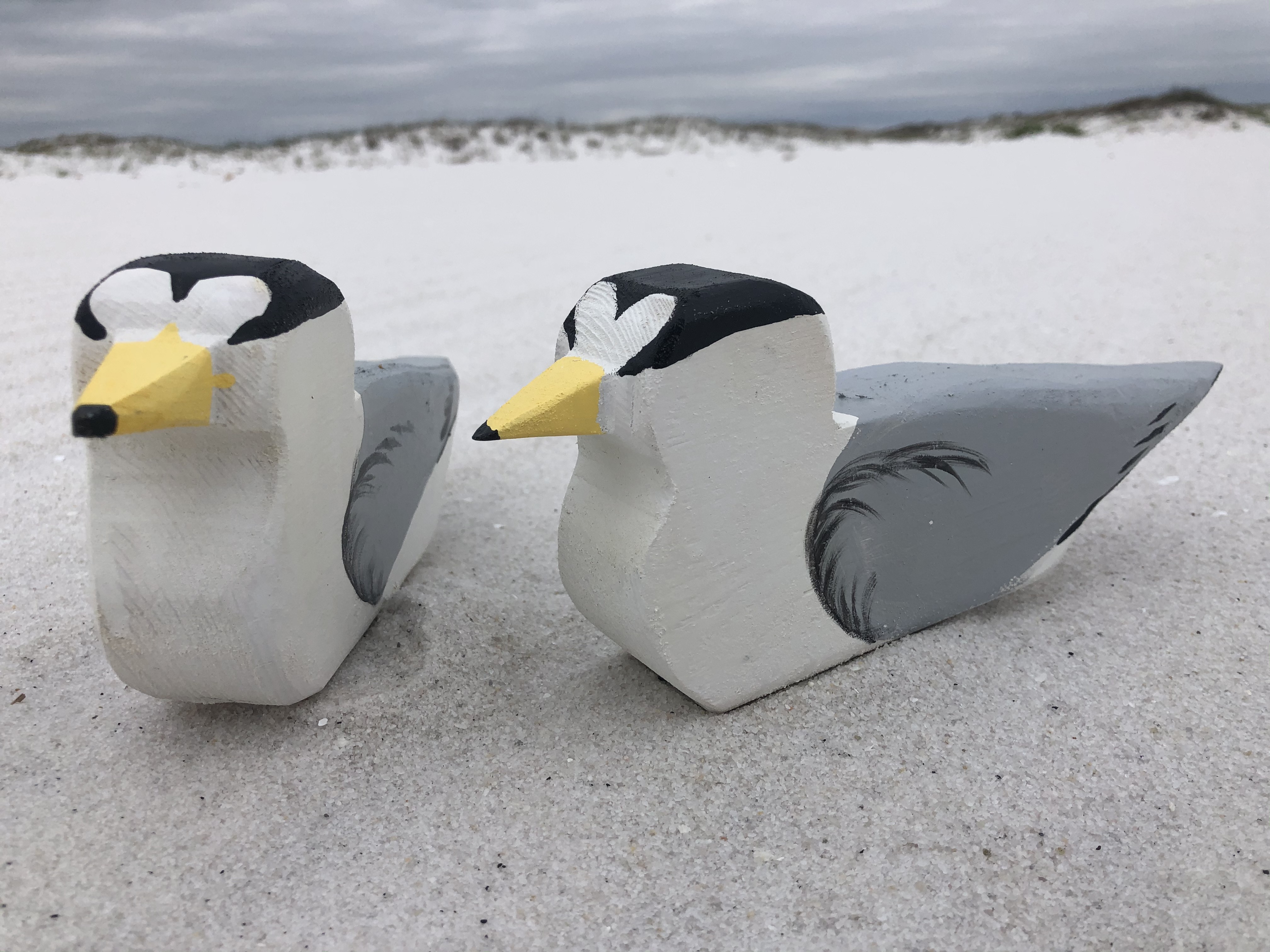News Release
You are viewing ARCHIVED content published online before January 20, 2025.
Please note that this content is NOT UPDATED, and links may not work. For current information,
visit https://www.nps.gov/aboutus/news/index.htm.

Warren
|
Subscribe
|
Contact: Stephenie Wade
GULF BREEZE, Fla. -- Gulf Islands National Seashore (GUIS) recently initiated a new method to prevent human disturbance of least tern nests within the park.Last year two park biologists, Kris Dudus and Kacey Srubas, came up with a great idea to make and deploy decoys to entice state-designated threatened least terns to colonize in more protected areas away from high-visitor-use areas such as parking lots and pavilions. Together they hand-made and painted 29 least tern decoys made from 2x4 lumber.
“Least terns prefer to nest in flat, open areas which unfortunately often coincides with high-visitor-use areas,” said Kacey Srubas, GUIS biological science technician. “In these areas least terns may experience a large amount of disturbance, which can cause them to flush from their nests, leaving their chicks and eggs vulnerable to predators and extreme heat.”
Prior to the arrival of the 2021 least terns breeding season, GUIS Science and Resource Stewardship staff selected flat, open areas of the beach away from high-visitor-use areas to place the decoys.
“Least terns nest in large colonies to increase the chances of survival and their ability to fend off potential predators,” said Ashley Warren, GUIS biologist. “Hopefully, the least terns will see the decoys as the start of a breeding colony that they can join, decreasing the potential impacts of human disturbance. So far the deployed decoys are working because we have seen scraping and nesting near them.”
Although the decoys are working, least terns are still nesting in the high-visitor-use areas. Visitors can help by staying out of temporarily posted breeding areas. These areas are identifiable by white posts with “Do Not Enter” stickers or sign, and white paracord strung between posts. Visitors should only access the shorelines using marked access points instead of walking over dunes and vegetation.
“When little white and black birds dive-bomb a person, this is a defense mechanism used to protect their eggs and chicks,” said Warren. “Visitors should leave the area immediately."
"While least terns are loud and will let you know that they are nesting nearby, there are other imperiled birds nesting in the area, such as snowy plovers, that are much more inconspicuous. Visitors walking through the dunes and vegetated areas could easily disturb these birds or even step on their well camouflaged eggs and chicks without even knowing it.”
There are currently 14 least tern decoys placed within blocked-off beach areas of the Florida portion of the park. Please do not remove or go looking for decoys. This is considered a habitat disturbance and violation of park regulations.
The Beach and Dune Habitat Protection Project that allows for these decoys and associated posting is a Deepwater Horizon Natural Resource Damage Assessment (NRDA) Early Restoration project. The project funds are being provided by BP as part of a 2016 settlement agreement with federal, state, and local governments. NRDA projects compensate the public for injuries to natural resources and the loss of the services they provide, such as recreational use. More information about other Deepwater Horizon Natural Resource Damage Assessment restoration projects can be found at www.gulfspillrestoration.noaa.gov.
Last updated: May 25, 2021
